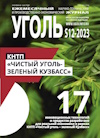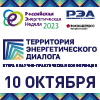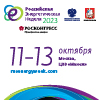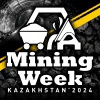
ECOLOGY
Original Paper
UDC 628.3:622 © L.A. Ivanova, O.V. Belyaeva, N.V. Gora, I.M. Ugarova, N.S. Golubeva, 2023
ISSN 0041-5790 (Print) • ISSN 2412-8333 (Online) • Ugol’ – Russian Coal Journal, 2023, № 11, pp. 81-87
DOI: http://dx.doi.org/10.18796/0041-5790-2023-11-81-87
Title
EFFICIENCY ANALYSIS OF METHODS TO REMOVE IRON AND MANGANESE IONS FROM COAL INDUSTRY WASTE WATER
Authors
Ivanova L.A.1, Belyaeva O.V.1, Gora N.V.1, Ugarova I.M.1, Golubeva N.S.1
1Kemerovo State University, Kemerovo, 650000, Russian Federation
Authors Information
Ivanova L.A., PhD (Engineering), Associate Professor, e-mail: lyuda_ivan@mail.ru
Belyaeva O.V., PhD (Chemistry), Associate Professor
Gora N.V., PhD (Engineering), Associate Professor
Ugarova I.M., Postgraduate student
Golubeva N.S., PhD (Engineering), Associate Professor
Abstract
In the natural environment heavy metal pollution in most cases affects quarry and mine waters. These waters penetrate into the working zone of underground mines from aquifers, surface reservoirs and drainage workings. Waste waters of coal operations are characterized with a high degree of mineralization, low concentration of hydrogen ions, increased content of magnesium and calcium salts, as well as sulphates, iron, manganese and other compounds. The variety of qualitative and quantitative composition of waste water at coal mining companies is conditioned by many factors, namely the geological and hydrological conditions, saturation with salts as a result of water filtration through different types of rocks, as well as mixing of natural reservoir waters from different horizons as a result of their penetration.
The article analyzes the efficiency of the existing system to remove iron and manganese ions from coal mine waste water. The main methods of additional treatment of waste water from these ions are discussed together with their advantages and disadvantages. A process flow is proposed for additional waste water treatment before its discharge into rivers, which includes reception and averaging of waste water; settling; subsequent intake and feeding of clarified water into a treatment plant for further additional treatment; chemical treatment; pressure flotation; filtration through a sand filter; and additional water treatment on sorption filters.
Keywords
Adsorption, Waste water, Heavy metals, Iron, Manganese, Treatment methods, Maximum allowable concentration, Settling, Mechanical filtration, Galvanic coagulation.
References
1. Ivanova L.A., Golubeva N.S., Timoshchuk I.V. et al. Evaluation of the efficiency of wastewater treatment of a coal mining enterprise and its impact on the pollution of small rivers. Ekologiya i promyshlennost? Rossii, 2023, Vol. 27, (1), pp. 60-65. (In Russ.). DOI: 10.18412/1816–0395-2023-1-60-65.
2. Sverguzova S.V., Khunadi L. & Voronina Yu.S. Heavy metals in the environment and their transformation. Chemical bulletin, 2019, (2), pp. 9-14. (In Russ.).
3, GN 2.1.5.1315-03. Maximum allowable concentrations (MACs) of chemicals in the water of water objects used for drinking and domestic recreation purposes. [Electronic resource]. Available at: http://www.infosait.ru/norma_doc/41/41363/.htm (accessed 15.10.2023).
4. Hein T.A., Aung P., Thang Z. Kh. et al. Electroflotation and sedimentation in wastewater treatment from hydroxides of heavy and nonferrous metal. Himicheskaya promyshlennost? segodnya, 2019, (6), pp. 30-37. (In Russ.).
5. Skorin V.P., Morozov Yu.D. & Abdullin A.Z. Method of wastewater treatment from copper, iron and manganese. Pat. No. 2238911 C1, Russian Federation, MPK C02F 1/62, C02F 103/16, C02F 103/36, Applic. No. 2003104567/15, claim 14.02.2003, publ. 27.10.2004.
6. Gladkikh S.N. Treatment of industrial waste waters from ions of heavy metals. Bezopasnost? zhiznedeyatel?nosti, 2022, (3), pp. 32-36. (In Russ.).
7. Ksenofontov B.S. & Bondarenko A.V. Complex installation for surface waste water treatment from iron. Santehnika, 2018, Vol. 3, (3), pp. 44-47. (In Russ.).
8. Trus I. Optimal conditions of ion exchange separation of anions in low-waste technologies of water desalination. Journal of Chemical Technology and Metallurgy, 2022, Vol. 57, (3), pp. 550-558.
9. Rajoria S., Vashishtha M. & Sangal V.K. Treatment of electroplating industry wastewater: a review on the various techniques. Environmental Science and Pollution Research, 2022, (29). DOI: 10.1007/s11356-022-18643-y.
10. Sapega S.I. & Digin V.N. Method of wastewater treatment. Pat. No. 2755988 C1 Russian Federation, MPK C02F 9/00, C02F 9/12, C02F 1/463, Applic. No. 2021106095, claim 10.03.2021, publ. 23.09.2021
11. Dedyukhina E.M., Dylgirova V.A. & Apollonova V.S. Treatment of quarry wastewater from iron ions. Zametki uchyonogo, 2020, (12), pp. 83-87 (In Russ.).
12. Gaidukova A.M., Kolesnikov V.A. & Pokhvalitova A.A. Treatment of electroplating wastewater from metal ions with the use of sorption in static mode and electroflotation. Teoreticheskaya i prikladnaya ekologiya, 2021, (4), pp. 160-166. (In Russ.). DOI: 10.25750/1995-4301-2021-4-160-166.
13. Timoshchuk I.V., Gorelkina A.K., Ivanova L.A. et al. On the possibility to use adsorption in treatment of quarry wastewater. Vestnik Nauchnogo centra po bezopasnosti rabot v ugol?noj promyshlennosti, 2021, (3), pp. 59-63. (In Russ.).
14. Kalyukova E.N., Pismenko V.T. & Ivanskaya N.N. Adsorption of manganese and iron cations by natural sorbents. Sorb.tscionnye i hromatograficheskie processy, 2010, Vol. 10, (2), pp. 194-200. (In Russ.).
15. Ilyasova R.R., Akhunov R.D. & Silantieva Yu.V. Vermiculite: a natural mineral for treatment of industrial wastewater from iron and manganese ions / Scientific research and development in the age of globalization: Proceedings of the International Scientific and Practical Conference, Volgograd, February 05, 2017, Vol. 3, Volgograd, Aeterna Publ., 2017, pp. 35-39. (In Russ.).
16. Stepanov S.V. & Panfilova O.N. Additional treatment of wastewater from heavy metal ions using natural zeolites. In collected works: Traditions and innovations in construction and architecture. Construction technologies. Samara State Technical University, Samara, Samara State Architecture and Construction University, 2017, pp. 289-292. (In Russ.).
17. Krasnova T.A., Gora N.V., Belyaeva O.V., Gorelkina A.K., Golubeva N.S. & Timoshchuk I.V. The use of semi-coke for phenol removal from aqueous solutions. Carbon Letters, 2021.
18. Krasnova T.A., Belyaeva E.E., Belyaeva O.V. et al. Use of carbon sorbents to remove manganese from aqueous media. Vodosnabzhenie i sanitarnaya tehnika, 2022, (7), pp. 18-24. (In Russ.). DOI: 10.35776/VST.2022.07.03.
Acknowledgements
The research was carried out as part of the ‘Development and implementation of complex technologies in the areas of exploration and extraction of minerals, industrial safety, bioremediation, creation of new deep conversion products from coal raw materials while consistently reducing the environmental impact and risks to human life’ Integrated Scientific and Technical Programme of the Full Innovation Cycle, approved by Order No. 1144-r of the Government of the Russian Federation dated May 11, 2022, Agreement No. 075-15–2022-1201 as of September 30, 2022.
For citation
Ivanova L.A., Belyaeva O.V., Gora N.V., Ugarova I.M. & Golubeva N.S. Efficiency analysis of methods to remove iron and manganese ions from coal industry waste water. Ugol’, 2023, (11), pp. 81-87. (In Russ.). DOI: 10.18796/0041-5790-2023-11-81-87.
Paper info
Received April 24, 2023
Reviewed October 13, 2023
Accepted October 26, 2023









